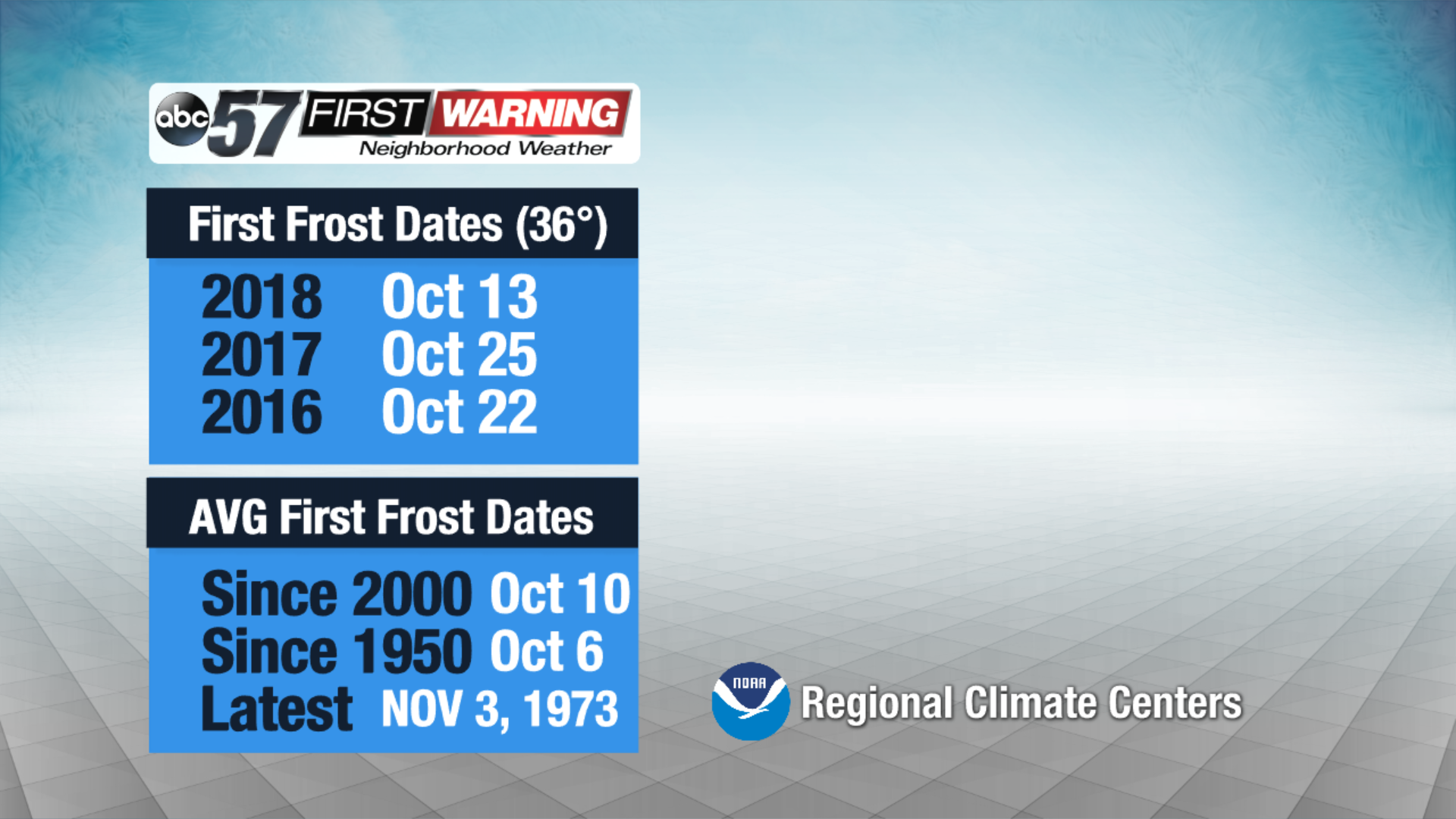Historically, mid-October is when the leaves are supposed to be at their peak color in Michiana, but that’s changing.
“We typically go out end of October, early November start picking up the leaves that the resident has raked to the tree lawn,” said Derick Roberts, director of streets and sewers for the city of South Bend.
October in Michiana known for classic fall weather, crisp days, chilly nights and the leaves changing colors.
“The problem we run into though is we only have a small window of time we can pick-it-up between our paving season ending and snow starting to fall and hit the ground,” Roberts said.
Historically peak color comes between October 15th and the 22nd. However, a recent trend shows the past few years has pushed back peak colors by about a week.
One major reason for that is summer weather is lasting longer. Leaves don’t change just because of the calendar; colder weather prompts the trees to start dropping leaves.
The last 80 degree day in South Bend is trending later and later. Since 1950, the average last day in the 80s is October 3rd, since 2000 it’s October 5th, and the past few years even later.
A similar trend can be seen in the first frost, when temps get down to 36 degrees or colder. Recent years have trended two weeks later than normal.
“I rake and blow them to the street and the city picks 'em up,” said Dave Martin, a South Bend homeowner on Portage Avenue.
Most residents I’ve talked to are like Mr. Martin, no major complaints about the city leaf collection plan but they will complain if the leaves are not picked up on time.
“It ends up being a big mess, because you have snow on top of leaves and you can't blow the leaves, you can't rake 'em, and then blow 'em again.” Says Martin.
It takes the city of South Bend two weeks to complete a pass of the city, with perfect weather.
“The past few years it's been a little bit more difficult just because the leaves have been falling later,” explained Derick Roberts with the City of South Bend.
That can slow down the process, more leaves in less time and neighbors notice when those piles aren’t picked-up.
“They aren't as consistent as the last couple years as they were 10 years ago,” Martin said.
Look at the past two years, both had very warm starts to October. Numbers in red highlight how many degrees above normal each day was. The first two to three weeks show a distinct warm trend, which is a major reason why leaves stayed on the trees later.
A shorter fall could mean a shorter transition to winter, and then snow.
“Changing the whole fleet over it's an hour and a half per truck,” said Roberts.
Those delays could mean leaves are stuck until spring. Later leaves might not be a crisis but it’s one of the most visible signs of climate change.
There are far greater impacts of climate change but the leaves are very noticeable. It shows the growing season is getting longer, the fall and winter season are getting shorter.
An update to the Fall 2018 leave forecast looks to bring peak color in a little sooner than recent years thanks to a slightly earlier frost and freeze.











